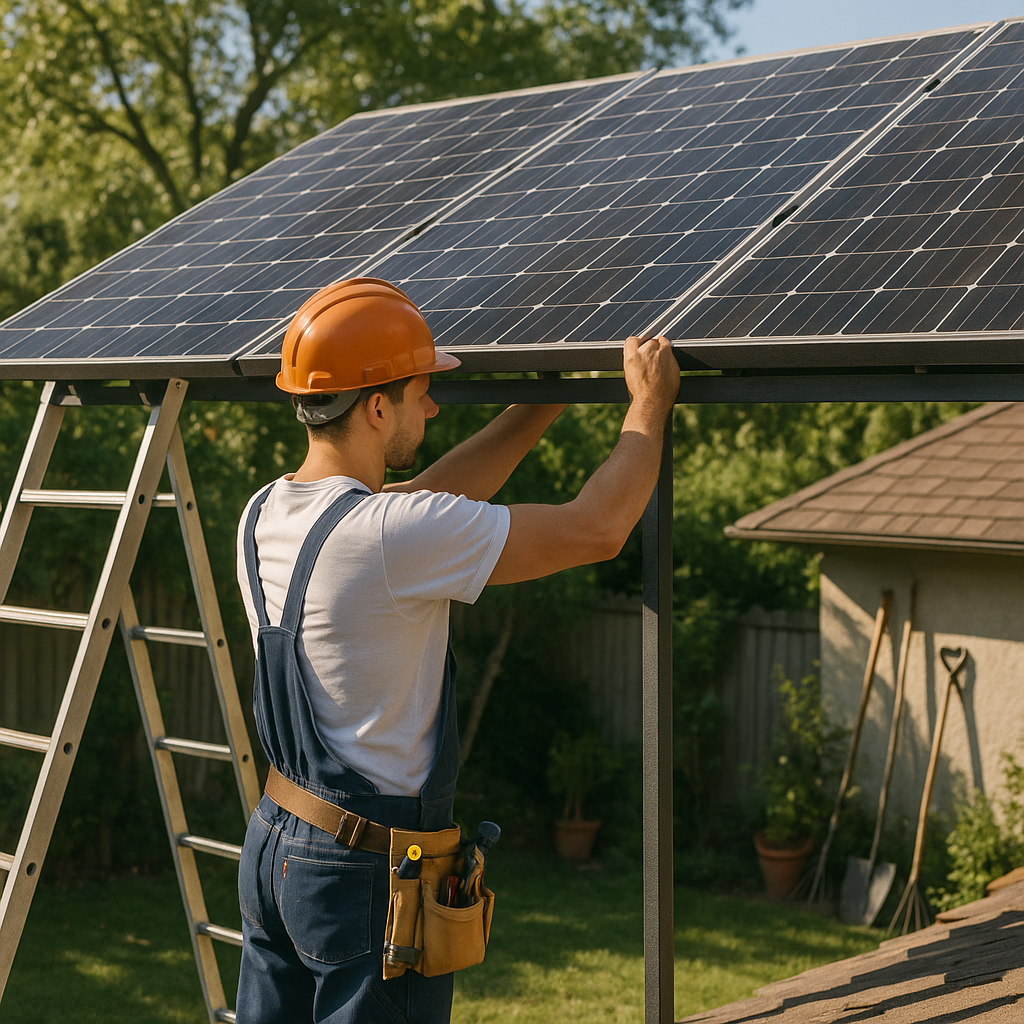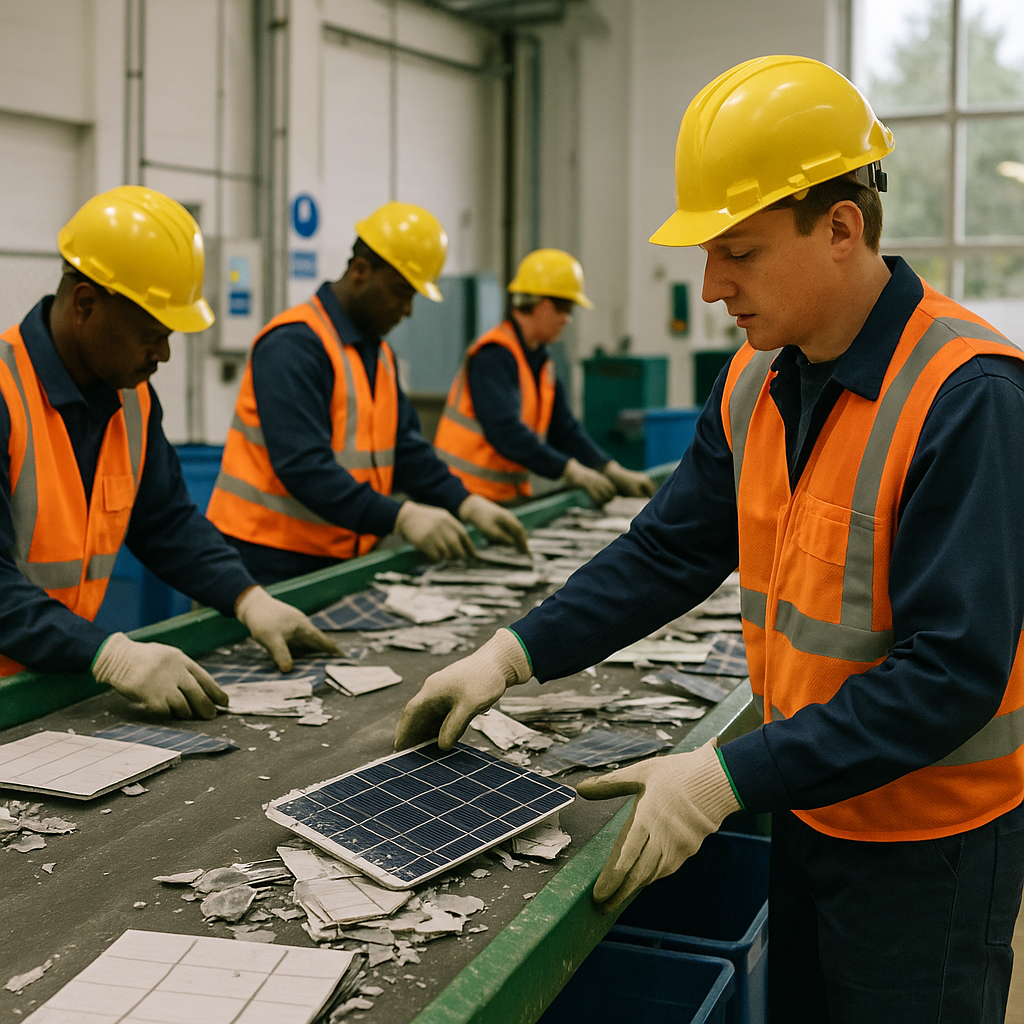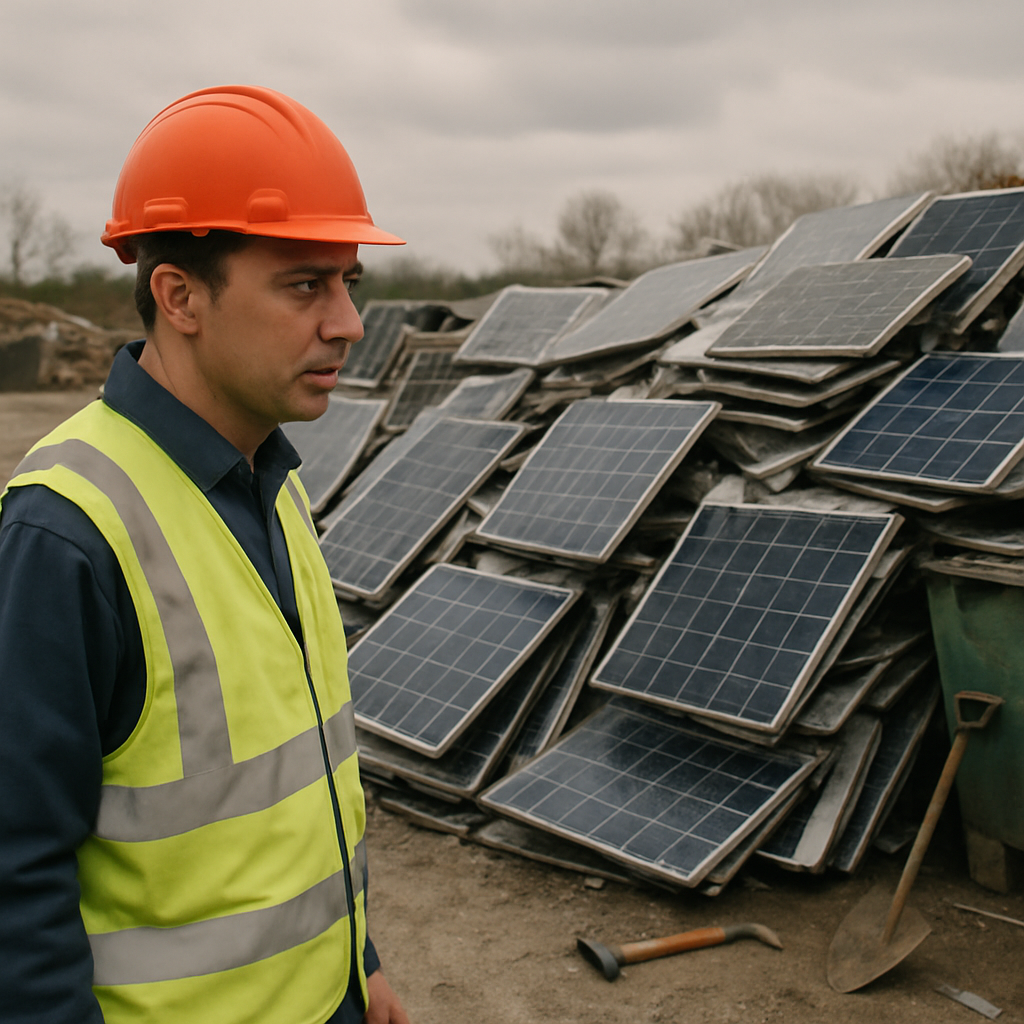5901 Botham Jean Blvd, Dallas, TX 75215
Options for Old Solar Panels? Everything You Need to Know
July 3, 2025What happens when the solar panels powering your home or business reach the end of their useful life? This question becomes more pressing as numerous panels installed during the early solar boom are nearing retirement.
Solar panels typically last 25-30 years before their efficiency significantly declines. Their increased popularity over the past decade means we’re approaching the first major wave of solar panel retirements. Finding responsible end-of-life solutions is crucial for maintaining solar energy’s green credentials.
Fortunately, several pathways exist for handling decommissioned solar panels. Recycling offers a sustainable solution, with specialized facilities now emerging to recover valuable materials including aluminum, glass, copper, and silicon. Repurposing provides another option, with older panels finding second lives in small off-grid applications, educational settings, or humanitarian projects in regions lacking reliable electricity. Understanding these options helps solar owners make environmentally sound choices when their panels finally need replacement.
How Can Old Solar Panels Be Repurposed?

When solar panels reach the end of their 25-30 year operational lifespan, they often retain significant functionality. Instead of discarding these valuable resources, creative repurposing offers sustainable alternatives that extend their usefulness and reduce environmental impact.
Art Installations
Old solar panels provide unique materials for artistic expression. A father-son duo recently created a series of art pieces from recycled panels for display at the House of Blues. These installations transform outdated technology into visual statements about sustainability.
Public spaces benefit from solar panel art that combines aesthetics with environmental messaging. The reflective surfaces and geometric patterns of panels make them ideal for outdoor sculptures that change appearance throughout the day.
Functional Off-Grid Applications
One practical way to repurpose old solar panels is in off-grid power systems. Even panels operating below their original capacity can still generate useful electricity for smaller applications.
Garden lighting systems represent an ideal use case. Panels can power LED path lights, decorative string lights, or security lighting without requiring complex setups. The low power requirements make this perfect for panels with diminished output.
Remote locations like cabins, outbuildings, or monitoring stations benefit greatly from repurposed panels. A UK homeowner successfully converted four 400W panels on an outbuilding into a functional off-grid system powering equipment in his workshop, despite having no practical way to add grid power.
Creative DIY Projects
DIY enthusiasts have found innovative ways to give old solar panels new life. Portable charging stations for small devices like phones or tablets make excellent use of panels that can no longer power larger systems.
For home gardeners, solar-powered irrigation systems offer an elegant solution. By connecting panels to small pumps, gardeners can automate watering schedules without increasing utility bills or requiring proximity to power outlets.
Some creative homeowners repurpose panels as functional furniture pieces. With proper framing and protective surfaces, old panels can become unique table tops, outdoor counters, or decorative wall elements, maintaining their connection to sustainable living.
Charging stations for electric bikes or scooters present another practical application. The modest power needs of these personal transportation devices align well with the reduced output of aging panels.
Through these diverse applications, old solar panels continue contributing to sustainability long after their primary use ends. Whether through artistic expression or practical function, repurposing extends their lifecycle and reduces waste, inspiring creative solutions to environmental challenges.
What Are the Recycling Options for Solar Panels?

When reuse isn’t feasible, recycling provides a sustainable solution for end-of-life solar panels. Specialized recycling services have emerged in the United States to meet the increasing need for responsible solar panel disposal. Companies like Cleanlites Recycling and Recycle PV Solar have developed processes specifically designed for the safe and efficient handling of photovoltaic modules.
These specialized recycling facilities use advanced methods to dismantle panels and separate their valuable components. The recycling process often starts with removing the aluminum frame and junction box. Subsequently, panels undergo mechanical or thermal treatment to separate the glass from the silicon cells and other materials. This careful separation enables high recovery rates of materials that might otherwise end up in landfills.
Through these processes, recyclers can recover up to 95% of a solar panel’s materials. Glass, comprising about 75% of a typical panel, can be repurposed for new glass products. Aluminum frames are easily recyclable and can be melted down and reused with minimal quality loss. The recovery of silicon, copper wiring, silver, and other metals conserves resources and prevents potential environmental contamination from improper disposal.
Beyond third-party recycling services, many solar equipment manufacturers acknowledge their responsibility in product stewardship by implementing their own recycling programs. Companies like First Solar and SunPower operate take-back programs that accept their end-of-life products for proper recycling. These manufacturer-led initiatives often achieve higher material recovery rates due to their detailed knowledge of product composition and design.
The environmental benefits of solar panel recycling extend beyond waste reduction. By recovering materials like silicon and aluminum, the industry reduces the need for energy-intensive mining and refining of virgin materials. This circular approach significantly lowers the carbon footprint associated with solar manufacturing while preventing hazardous materials from entering the waste stream. As the solar industry continues to grow, these recycling pathways will play an increasingly crucial role in maintaining the technology’s environmental credentials.
What Are the Challenges in Solar Panel Disposal?

The solar industry faces significant hurdles in managing end-of-life panels. Current estimates indicate a staggering 78 million metric tons of solar panel waste globally by 2050. This crisis requires immediate attention as the first generation of photovoltaic installations reaches retirement age.
The economic viability of recycling is a major challenge. The process often incurs costs greater than the value of recovered materials. Without effective recovery methods for valuable components like silver and silicon, many panels end up in landfills, where their toxic elements can potentially contaminate soil and groundwater.
Technical limitations significantly hamper recycling efforts. Most current processes primarily focus on removing aluminum frames and glass covers, which comprise about 80% of a panel’s mass. However, the most valuable materials remain trapped within complex panel structures. Silicon cells are typically encapsulated in ethylene-vinyl acetate (EVA), requiring temperatures exceeding 500°C to break down.
The lack of standardization in panel composition creates further complications. With varying designs and materials across manufacturers, recyclers struggle to develop universal processing methods. This inconsistency increases processing costs and reduces efficiency.
Hazardous material concerns add another layer of complexity. Many solar panels contain potentially toxic substances, including lead, cadmium, and selenium. When panels break or degrade in landfills, these materials can leach into the environment. Some regions have begun classifying end-of-life panels as electronic or hazardous waste, necessitating specialized handling procedures.
Transportation and logistics also pose challenges for collection networks. The distributed nature of solar installations, especially residential systems, makes gathering enough panels to justify recycling costs difficult. Panels must be carefully packaged to prevent breakage during transport, adding to handling expenses.
Regulatory frameworks remain inconsistent across regions. While the European Union has implemented comprehensive regulations through its WEEE Directive, the United States relies on a patchwork of state-level policies. This regulatory uncertainty creates confusion for industry stakeholders and hinders the development of standardized recycling infrastructure.
Despite these obstacles, the solar industry is actively working to develop more efficient recycling technologies and processes. Innovations in thermal and chemical recycling methods show promise for enhancing material recovery rates. Extended Producer Responsibility programs are gaining traction, placing greater responsibility on manufacturers for end-of-life management.
Conclusion: Embracing Sustainable Solutions for Old Solar Panels
As the solar industry grows, responsible end-of-life management for panels is becoming increasingly important. Sustainability efforts must continue beyond a solar panel’s optimal energy production phase. From creative repurposing projects to advanced recycling techniques, there are numerous options for handling old solar panels in environmentally conscious ways.
By choosing to recycle old panels, valuable materials like silicon, glass, and metals can be recovered and reintroduced into manufacturing processes. This circular approach not only reduces landfill waste but also decreases the demand for raw materials and their environmental impacts. Similarly, repurposing panels for smaller applications or creative projects extends their useful life and maximizes the initial clean energy investment.
Ready to responsibly dispose of your old solar panels? Contact Okon Recycling at 214-717-4083. Our team can help you explore the best recycling options for your specific needs, ensuring your end-of-life panels contribute to a more sustainable future rather than becoming waste.
